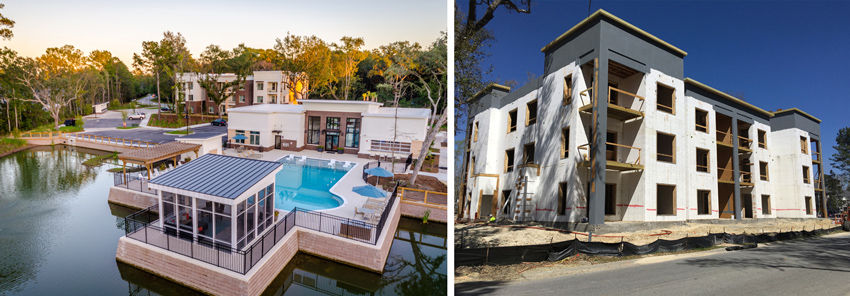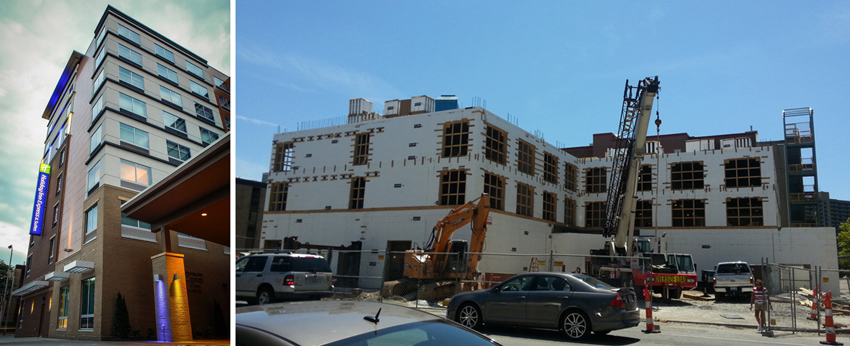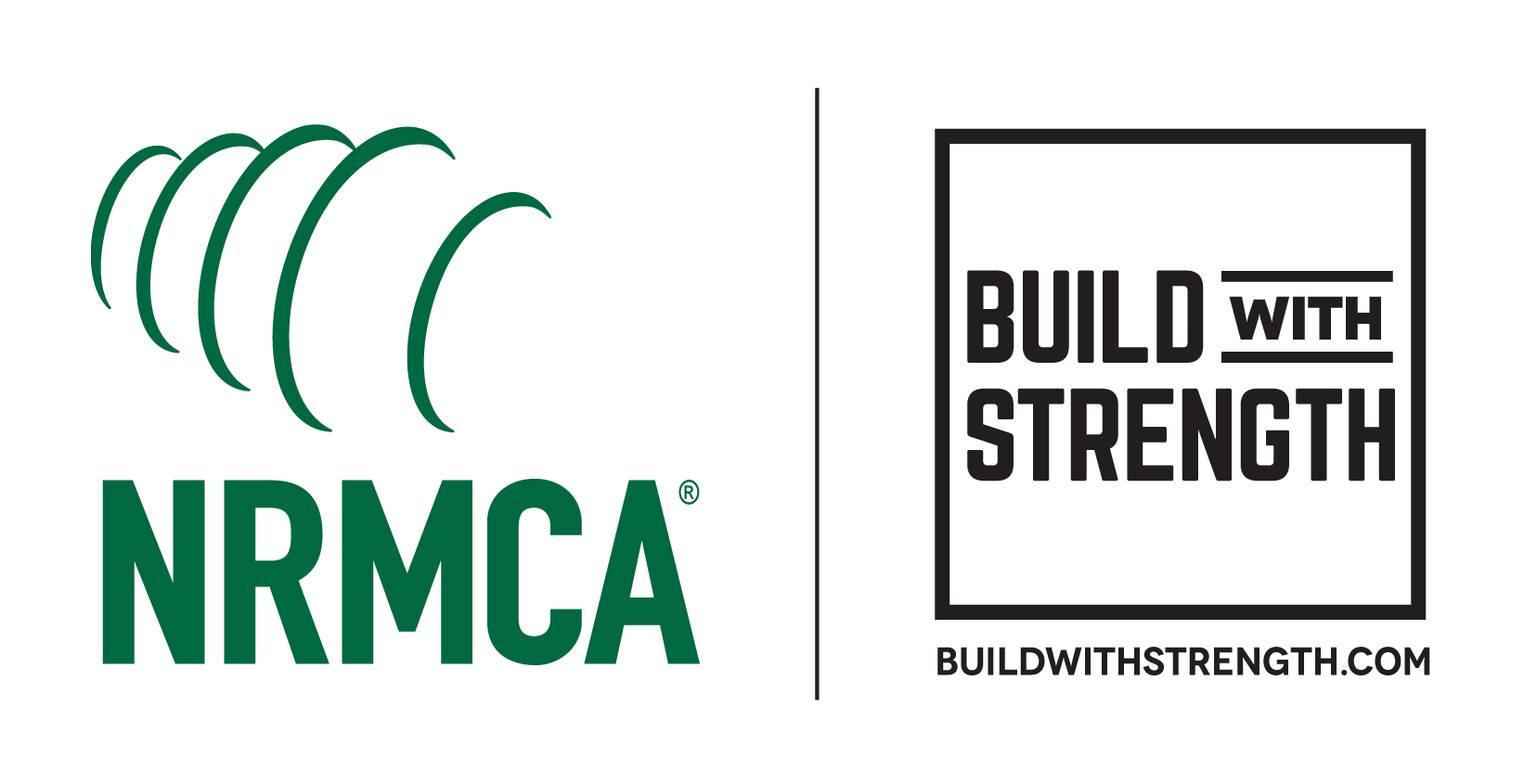Making the Business Case for Building with Insulated Concrete Forms: Energy, Safety, and Savings
The Ownership Benefits of Building with ICFS
For architects, owners, or developers considering working with ICFs, there are four key factors to consider:
- Retention. This is especially important when considering senior living and multifamily apartments. If residents are comfortable, safe, and saving money on electric and gas bills, they are more likely to stay in their units. If the occupant turnover rate is reduced, the owner saves money.
In wood-frame buildings in the United States, units experience approximately 30–40 percent turnover rates. With ICFs, the turnover rate is 15–25 percent. It should be noted that some turnover rates are because renters are moving from one- to two-bedroom units in the same building. Owners still pay some of the turnover cost, but the tenant is not actually leaving.
Example: If there are 100 units in a wood-frame building and each has a re-rental cost of $500, a 30 percent turnover equates to $15,000. With ICFs, a 15 percent turnover amounts to $7,500.
Result: $7,500 increase to net operating income (NOI) or $136,000 of value at 5.5 percent capitalization rate (CAP).
- Reserves/deferred maintenance. This is an important issue with people that are acquisition buyers for apartments, but ground-up developers frequently do not do a good job with reserves or deferred maintenance costs on projects. With ICFs, these reserves can be reduced by about 30 percent. Typically, about $250 a unit per year goes into a reserve fund; however, this can be reduced primarily because there are no issues with water intrusion and mold on the exterior. Often, when siding is replaced, owners end up having to replace the substructure and the OSB that is there because of unexpected mold.
Example: 100 units at $250 a unit is $25,000 for a wood frame. With ICFs, the cost is approximately $17,500, which is another savings of $7,500.
Result: $7,500 increase to NOI or $136,000 of value at 5.5 percent CAP
- Energy efficiency. Conservatively speaking, there is an estimated 50 percent in heating and cooling savings. Depending on construction methods and the efficiency of the products used, energy savings often are more than 50 percent.
Example: 100 units with average heating and cooling costs for common areas is $2,500 a month. Wood frame is $30,000; ICFs are $15,000.
Result: $15,000 increase to NOI or $272,000 of value at 5.5 percent CAP
- Insurance. Owners have the opportunity for a possible savings of 10–15 percent off annual insurance premiums as builder’s risk policies have been increasing for wood-frame construction. From an ownership standpoint, there is an average of 10–15 percent annual savings, which sometimes amounts to 30 percent.
Example: 100 units at $400 a unit per year.
Wood frame: $40,000
ICFs: $34,000–$36,000
Result: $4,000 to $6,000 increase to NOI or $72,000 to $109,000 of value at 5.5 percent CAP.
In total, owners would save $34,000 to NOI or $618,000 of value at 5.5 percent CAP. There are additional savings if the owner is responsible for utilities or if the building is a hotel.
Example: 100 units, $100 average monthly heating and cooling costs.
Wood frame: $120,000/year
ICFs: $60,000/year
Result: $60,000 addition to NOI or $1,090,000 in value at 5.5 percent CAP.
Overall, while the upfront costs of building with ICFs might be slightly more, the savings over time are more substantial than the initial increase in construction cost.
Conclusion
ICF systems result in construction that is faster, easier, and less labor intensive than other construction methods, such as wood or steel framing. ICFs are lightweight, durable, and offer a system that requires less skilled labor. The system combines the reinforced-concrete structural system along with the thermal, air, and moisture barrier in one step, which reduces the number of trades required on-site. Construction can also continue all year long since the forms provide an ideal curing condition for concrete during the hottest and coldest weather. Because the forms stay in place after concrete is poured, there is no need for labor-intensive wood, aluminum, and steel formwork that requires large cranes and other expensive hauling equipment.
All of this leads to a construction system that is ideal for today’s competitive construction environment. ICFs are also ideal for building owners, providing retention, deferred maintenance, energy efficiency, and insurance benefits and savings without sacrificing design quality.
As Matt Green of KB Walker maintains, “Design and functionality should coexist. As the world becomes more interconnected and cities become denser, ICFs will continue to offer bigger and bigger advantages.” He notes that developers, owners, builders, and architects alike will “want to make sure their buildings are as insulated from man-made disasters as from natural disasters. And the best thing you can do to make sure your bottom line is not impacted through any sort of adverse activity is to build with concrete.”
End Notes
1“The Benefits of Using ICF: One Architect’s Perspective.” Architect. Web. 23 April 2021
2“Standing Up to Man-Made Disasters.” ICF Builder. 15 September 2017. Web. 23 April 2021
3Mazzei, Patricia. “Among the Ruins of Mexico Beach Stands One House, Built ‘for the Big One.’” The New York Times. 14 October 2019. Web. 23 April 2021
4Mazzei, Patricia. “Among the Ruins of Mexico Beach Stands One House, Built ‘for the Big One.’” The New York Times. 14 October 2019. Web. 23 April 2021
5“Ricchi Condos.” ICF Builder. 4 July 2014. Web. 23 April 2021
6“Ricchi Condos.” ICF Builder. 4 July 2014. Web. 23 April 2021











